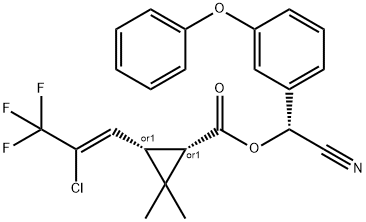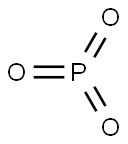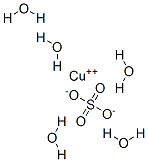Aluminum phosphide
Synonym(s):Di-1-adamantyl(4″-butyl-2″,3″,5″,6″-tetrafluoro-2′,4′,6′-triisopropyl-2-methoxy-meta-terphenyl)phosphine
- CAS NO.:20859-73-8
- Empirical Formula: AlP
- Molecular Weight: 57.96
- MDL number: MFCD00046171
- EINECS: 244-088-0
- SAFETY DATA SHEET (SDS)
- Update Date: 2024-12-18 14:08:57

What is Aluminum phosphide?
Description
Aluminum phosphide, is a binary salt, one of the NCHP acronyms (see Chapter 2). These salts have the specific hazard of giving off poisonous and pyrophoric phosphine gas when in contact with moist air, water, or steam. They will also ignite spontaneously upon contact with air. This compound is composed of gray or dark yellow crystals and is a dangerous fire risk. Aluminum phosphide decomposes upon contact with water and has a specific gravity of 2.85, which is heavier than water. The four-digit UN identification number is 1397. The NFPA 704 designation is health 4, flammability 4, and reactivity 2. The white section at the bottom of the diamond has a W with a slash through it, indicating water reactivity. Aluminum phosphide is used in insecticides, fumigants, and semiconductor technology.
Chemical properties
yellow or grey crystals
Chemical properties
Aluminum phosphide is a pyrophoric, dark gray or dark yellow crystalline solid
The Uses of Aluminum phosphide
Source of phosphine; in semiconductor research; as fumigant.
The Uses of Aluminum phosphide
The primary use for AlP is as a fumigant to control insects and rodents in both food and nonfood crops in indoor environments. It is also used in the control of rodents outdoors via application to their burrows or in grain storage areas. Due to the extremelycommonuse of this compound for protecting rice, it is also called rice tablet in some countries. AlP is formulated in solid form and is available for use as a tablet, pellet, or dust. It is marketed as dark gray 3-g tablets consisting of AlP (56%) and carbamate (44%), under brand names such as Celphos, Alphos, Quickphos, Phosfume, Phostoxin, Talunex, Degesch, Synfume, Chemfume, Phostek, and Delicia in porous hags or blister packs.
General Description
Aluminum phosphide is a dark gray or dry, yellow, crystalline solid. Aluminum phosphide reacts with moisture to give phosphine, a flammable and poisonous gas. Normally, phosphine will spontaneously ignite upon contact with air. If there is an excess of water, the phosphine fire will not normally ignite any surrounding combustible material.
Air & Water Reactions
Decomposed by water or moist air, evolving phosphine, a toxic gas that often ignites [Merck 11th ed. 1989].
Reactivity Profile
Aluminum phosphide is a reducing agent. Contact with mineral acids causes explosive evolution of toxic phosphine [Wang, C. C. et al., J. Inorg. Nucl. Chem., 1963, 25, p. 327]. Heating produces highly toxic fumes of phosphorus oxides. Can react vigorously upon contact with oxidizing agents. [Sax, 9th ed., p. 119].
Hazard
Dangerous fire risk. It evolves phosphine.
Health Hazard
Acute toxicity occurs primarily by the inhalation route when Aluminum phosphide decomposes into the toxic gas, phosphine. The human median lethal dose for Aluminum phosphide has been reported to be 20 mg/kg. Rated as super toxic: probable oral lethal dose is less than 5 mg/kg or less than 7 drops for a 70 kg (150 lb.) person.
Fire Hazard
Releases toxic fumes on exposure to moist air, water, or acids. Decomposes to produce phosphine gas. Avoid water, dilute mineral acids, dilute or concentrated hydrochloric acid. Stable when dry. Avoid moist air.
Agricultural Uses
Fumigant, Fungicide, Rodenticide, Insecticide: Used as an insecticidal fumigant for grain, peanuts, processed food, animal feed, leaf tobacco, cottonseed, and as space fumigant for flour mills, warehouses and railcars. It is also used in baits for rodent and mole control in crops. Used as a source of phosphine; in semiconductor research. Zinc phosphide is often mixed with bait food such as cornmeal, which can be a danger to pets and children. When phosphides are ingested or exposed to moisture, they release phosphine gas. A U.S. EPA restricted Use Pesticide (RUP). Metallic phosphides on clothes, skin, or hair can react with water or moisture to generate phosphine gas.
Trade name
AL-PHOS®; CELPHIDE®; CELPHOS®; DELICIA®; DETIA®; DETIA-EX-B®; DETIA GAS EX®; DETIA-GAS-EX-B®; DELICIA GASTOXIN; FARMOZ®; FUMITOXIN®; PHOSTOXIN®; PHOSTOXIN-A®; QUICKPHOS®; QUICK TOX®; RENTOKIL GASTION®
Safety Profile
A human poison by inhalation and ingestion. Dangerous; in contact with water, steam, or alkali it slowly yields PH3, which is spontaneously flammable in air. Explosive reaction on contact with mineral acids produces phosphine. When heated to decomposition it yields toxic PO,. See also ALUMINUM COMPOUNDS, PHOSPHIDES, and PHOSPHINE. AHGOOO
Potential Exposure
Used as a rodenticide; wood preservative; as a source of phosphine; as an insecticidal fumigant for grain, peanuts, processed food, animal feed, leaf tobacco, cottonseed; and as space fumigant for flour mills, warehouses and railcars. Used in semiconductor research
Environmental Fate
Phosphine is known to bind to and inhibit cytochrome oxidase and changes the valence of the hem component of hemoglobin. Oxidative stress is one of the main mechanisms of action of AlP toxicity, which boosts extramitochondrial release of free oxygen radicals resulting in lipid peroxidation and protein denaturation of the cell membrane in various organs. Furthermore, AlP reduces glutathione, which is one of the main antioxidant defenses. AlP causes toxic stress, accompanied by changes in glucose metabolism. It also disrupts protein synthesis and enzymatic activity, particularly in the lung and heart cell mitochondria, which leads to blockage of the mitochondrial electron transport chain. Phosphine may cause denaturing of various enzymes; it is involved in cellular respiration and metabolism, and may be responsible for denaturation of the oxyhemoglobin molecule.
Shipping
UN1397 Aluminum phosphide, Hazard Class: 4.3; Labels: 4.3-Dangerous when wet material, 6.1-Poisonous materials.
Toxicity evaluation
Once exposed to water or in the presence of high ambient humidity, AlP generates phosphine gas. Therefore, atmospheric dissipation is expected to be the primary fate process for phosphine. In addition to phosphine being generated from the reaction of AlP with water, the other reaction product is aluminum hydroxide, a common constituent of clay. If the liberated phosphine (PH3) burns, it will produce phosphorus pentoxide (P2O5), which forms orthophosphoric acid (H3PO4) when exposed to water.
Incompatibilities
Able to ignite spontaneously in moist air; forms toxic and explosive phosphine gas on contact with moisture in air. Reacts violently with water, steam, carbon dioxide; acids, alcohols, and foam fire extinguishers. Contact with water and bases slowly releases highly flammable and toxic phosphine gas.
Waste Disposal
Consult with environmental regulatory agencies for guidance on acceptable disposal practices. Generators of waste containing this contaminant (≥100 kg/mo) must conform with EPA regulations governing storage, transportation, treatment, and waste disposal. Allow to react slowly with moisture in the open, being sure that phosphine gas evolved is dissipated. Alternatively, mix with dry diluent and incinerate at temperature above 1000 C with effluent gas scrubbing. In accordance with 40CFR165, follow recommendations for the disposal of pesticides and pesticide containers. Must be disposed of properly by following package label directions or bycontacting your local or federal environmental control agency, or by contacting your regional EPA office.
Properties of Aluminum phosphide
| Melting point: | 2000℃ |
| Density | 2.42 |
| solubility | reacts with H2O |
| form | green or yellow cubic crystals |
| color | Green or yellow |
| Water Solubility | reacts with H2O to produce phosphine [MER06] |
| Crystal Structure | Cubic, Sphalerite Structure - Space Group F(-4)3m |
| Stability: | Flammable solid. Contact with acids liberates highly toxic gas (phosphine). Incompatible with acids, moisture, oxidizing agents. |
| CAS DataBase Reference | 20859-73-8(CAS DataBase Reference) |
| NIST Chemistry Reference | Aluminum monophosphide(20859-73-8) |
| EPA Substance Registry System | Aluminum phosphide (20859-73-8) |
Safety information for Aluminum phosphide
Computed Descriptors for Aluminum phosphide
Aluminum phosphide manufacturer
Intech Organics Ltd
Sarthi Chem Pvt Ltd
New Products
(S)-3-Aminobutanenitrile hydrochloride 4-Methylphenylacetic acid N-Boc-D-alaninol N-BOC-D/L-ALANINOL Tert-butyl bis(2-chloroethyl)carbamate 3-Morpholino-1-(4-nitrophenyl)-5,6-dihydropyridin- 2(1H)-one Furan-2,5-Dicarboxylic Acid Tropic acid 1-Bromo-3,5-Di-Tert-Butylbenzene S-2-CHLORO PROPIONIC ACID ETHYL ISOCYANOACETATE 2-Bromo-1,3-Bis(Dimethylamino)Trimethinium Hexafluorophosphate 4-IODO BENZOIC ACID 3-NITRO-2-METHYL ANILINE 1-(2,4-DICHLOROPHENYL) ETHANAMINE (2-Hydroxyphenyl)acetonitrile 4-Bromopyrazole 2-(Cyanocyclohexyl)acetic acid 4-methoxy-3,5-dinitropyridine 1-(4-(aminomethyl)benzyl)urea hydrochloride 2-aminopropyl benzoate hydrochloride diethyl 2-(2-((tertbutoxycarbonyl)amino) ethyl)malonate tert-butyl 4- (ureidomethyl)benzylcarbamate Ethyl-2-chloro((4-methoxyphenyl)hydrazono)acetateRelated products of tetrahydrofuran








You may like
-
 20859-73-8 Aluminum phosphide 98%View Details
20859-73-8 Aluminum phosphide 98%View Details
20859-73-8 -
 20859-73-8 Aluminum phosphide 99%View Details
20859-73-8 Aluminum phosphide 99%View Details
20859-73-8 -
 1975-50-4 98%View Details
1975-50-4 98%View Details
1975-50-4 -
 2-HYDROXY BENZYL ALCOHOL 98%View Details
2-HYDROXY BENZYL ALCOHOL 98%View Details
90-01-7 -
 2-Chloro-1,3-Bis(Dimethylamino)Trimethinium Hexafluorophosphate 221615-75-4 98%View Details
2-Chloro-1,3-Bis(Dimethylamino)Trimethinium Hexafluorophosphate 221615-75-4 98%View Details
221615-75-4 -
 61397-56-6 CIS BROMO BENZOATE 98%View Details
61397-56-6 CIS BROMO BENZOATE 98%View Details
61397-56-6 -
 14714-50-2 (2-Hydroxyphenyl)acetonitrile 98+View Details
14714-50-2 (2-Hydroxyphenyl)acetonitrile 98+View Details
14714-50-2 -
 118753-70-1 98+View Details
118753-70-1 98+View Details
118753-70-1